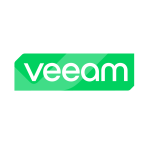We mostly use Nutanix Prism for monitoring and management. It serves as a unified dashboard for all our Nutanix hyper-converged infrastructure, providing a single point of access and control.
All of our workloads are hosted on our private cloud, and we have set up one cluster for the proof of concept in Azure's public cloud.
The single pane of glass user experience has been really good. The dashboard, as it comes out of the box, has proven to be sufficient for our needs, and we haven't felt the need to make significant modifications or add extra widgets. The core of what we want to monitor and receive alerts on is already available in the default dashboard in Prism. Therefore, we use the dashboard as-is daily, and it provides all the statistics we are interested in and concerned about, right from the start.
Everything has been quite intuitive. It has been four years now, and originally, we struggled a bit to understand some of the more advanced networking concepts. However, apart from that, everything has been pretty user-friendly. Even when coming on board without any prior knowledge of the product, it was quite easy to pick up. In fact, it was far easier to grasp than competitors' products that I've worked with in the past, especially when it comes to the intuitive use of the interface.
The network visibility has been really good.
The two biggest improvements or benefits for us are related to our team and the infrastructure. The first significant improvement is the ease of deployment, which allows us to swiftly implement new clusters or projects once we have the necessary hardware. In the past, this process used to take days, weeks, or even longer, but now it only takes hours or days. The second advantage is the increased efficiency and accuracy in deploying. This has been a tremendous benefit for us, as it allows us to deploy more effectively and with greater precision. Furthermore, the ongoing and substantial benefit of Life Cycle Management. LCM has saved us countless man-hours and provided us with the capability to perform software updates even in a production environment, without the need for scheduled downtime during regular working hours or weekends.
Nutanix Prism has significantly enhanced the efficiency of IT management within our organization. It has reduced the man-hours required for patching updates by approximately 75 percent, in my estimation. Undoubtedly, this has been our most significant return on investment. Additionally, we have not experienced any adverse effects on end users or production processes since the implementation of these clusters, which occurred nearly a year before I joined the team, making it almost five years since their deployment. This level of performance is truly impressive.
Nutanix Prism has significantly improved the efficiency of our data protection teams. Although we aren't utilizing Nutanix for backup purposes, we continue to rely on Veeam and Spectrum Protect for our backup needs. However, we do make use of protection domains for specific environments, enabling us to achieve almost immediate recovery to a different cluster site.
Prism provides us with insights and the ability to access all the sub-components of Nutanix's hyperconverged platform. The most beneficial feature for us has been the technical management portion of Prism. It allows us to perform both software and firmware updates for the hardware and software components of the hyperconverged platform without any perceived interruption to the service.
The licensing cost has room for improvement.
I have been using Nutanix Prism for four years.
We encountered some issues during a firmware update where a host became unavailable. However, to the best of my knowledge, including the four years I've been working with the product and the five years the company has been using it, we've never experienced a perceivable outage to our end users or any processes related to Nutanix Prism. We did have instances where a host or a cluster went down, but it didn't affect any of the workloads on those clusters.
Scalability with Nutanix Prism has been very good. We've expanded three clusters that were in production as we placed more workloads on them, or the end-user load just got increased, and we needed to meet the demand. Expanding a cluster is pretty straightforward. We've done all of them internally, and they were successful. We've performed some expansions during normal production hours, and some after regular production hours. At this point, we're comfortable enough to do it during production hours as there is no foreseeable impact on the workloads on those systems.
I have contacted technical support many times, and it has always been very helpful, especially early on when I was not as familiar with the product. I remember a case where we encountered an issue while upgrading some firmware on a third-party host. This host is a part of our clusters that run the native AHV hypervisor, while we also have clusters running the VMware ESX hypervisor in Nutanix's platform. Although the problem was actually related to the ESX hypervisor, the support engineer insisted on staying with us and walking us through the resolution, even though it was a VMware issue and not a Nutanix Prism issue. That level of assistance was truly above and beyond.
The initial setup is extremely straightforward. We had a vendor consultant assist us with the first three cluster deployments, but afterward, we decided not to spend money on the service and do it ourselves. As a result, we currently have seven clusters. The last four were all set up internally. There have been instances where we were able to set up clusters in a day once we had the necessary hardware on-site.
For our first three clusters, we had an integrator consultant's assistance. However, for the last four, we implemented them independently and internally.
Like everyone else, I would prefer Nutanix Prism's licensing to be more affordable. However, I believe in the principle of "you get what you pay for." Currently, I don't think there's a better alternative available for hyperconverged infrastructure. We might be able to find a lower-priced option, but they are positioned in a higher echelon, and the price, I believe, reflects that. Nevertheless, I consider it a worthwhile investment.
I give Nutanix Prism a nine out of ten.
We fumbled a bit with Nutanix Prism's automation, but we haven't found a practical use for it. We already have several third-party tools in place that effectively manage our large-scale deployments. Additionally, we have numerous custom scripts already set up, enabling us to build hundreds of systems. Consequently, we haven't felt the need or desire to reinvent the wheel within Nutanix Prism since our current setup works well for us.
Currently, we are not using Flow as we have not implemented it yet. We are in the process of replacing our underlying physical network switches with multiple vendors. We are waiting to have one specific product across the entire network before we proceed with implementing Flow within Nutanix.
On our roadmap for this current quarter are containers. Looking ahead, AI will be on our roadmap for the next year. Potentially, we'll be working on some AI-related projects in the last quarter of this year in response to compromised endpoints.
We haven't fully explored granting our app development team or our DBAs access to the environment. Since I joined, we've refreshed about 85 percent of all the infrastructure at this organization. Consequently, there have been numerous changes, leaving little time for in-depth exploration. We haven't made much progress in automation, though we would like to. Unfortunately, time constraints have prevented us from doing so. Once we finish that task, we plan to onboard our DBAs and explore the benefits of what they now refer to as the Nutanix Era after a recent name change. It seems highly advantageous for the DBAs, but unfortunately, we haven't had the time to allocate to such projects yet. Our main focus has been on a complete refresh of the organization's infrastructure.
The onboarding experience between Prism and VMware is different, obviously. With Nutanix, we have the ability to go from days and weeks of implementation time, once we have the hardware on-site, to just hours and days. Sometimes, we can get a cluster up and fully running in a single day. Of course, we still have a test validation period, but at this point, we haven't encountered any issues. We can get a cluster up in a day, and it's ready for production, pending vetting and testing. This never happened with VMware vSphere, but it's important to note that VMware vSphere is not a hyper-converged solution; it operates on a three-tier model. Therefore, it's expected that VMware vSphere would take longer. Nevertheless, Nutanix has significantly reduced the implementation time by a factor of seven to ten.
I was involved in deploying everything in our DR site that had not been implemented by the time I started, and I set it up initially. Our Prism cluster went from a single Prism instance to a clustered Prism environment.
As far as the ability goes, we started implementing the second cluster with help from our vendor. After that, we became champions, saying that we were ready to do it on our own. We believed it was easy enough to handle independently. However, we weren't sure if the administration had already established a statement of work in place. Nonetheless, we went ahead and proceeded with the third implementation, working with the service provider. We managed the last four implementations on our own, relying on our team. Our team currently consists of seven people, with all but two having been involved in previous implementations or expansions. Thus, everyone is quite familiar with the process, making it easy for them to handle day-to-day tasks, such as adding guest VMs or snapshotting. While the overall process has been intuitive, we are still continuously learning. There's a lot more to explore and accomplish, but due to the time spent on refreshing our current environment, we haven't delved into everything yet. Realistically, within a couple of weeks after starting, we had our new employee, who joined about a year and a half ago, up and running. He was already familiar with the technology, particularly VMware, which shares some similarities. Learning the system is comparable to understanding and mastering a new language, figuring out how to put everything together systematically, and using the right terminologies. The interface is user-friendly and intuitive. Our new team member had minimal questions and was able to work efficiently within a week or two.
There are feature updates and security updates that we have to apply. Besides that, once we have set up our dashboard with the widgets we want, adding a new cluster to our environment and integrating it into Prism is straightforward. There's nothing much to change. Just upgrades and security patches, which are pretty simple. We just go into the portal, select the upgrade we want to apply, and let it run.
There is a community edition. I'd say, give it a try. We can grab the community edition. The software doesn't care what hardware we run it on, so we could test it on whatever hardware we have available. And, we see, the proof is in the pudding. People should test it out for themselves.











